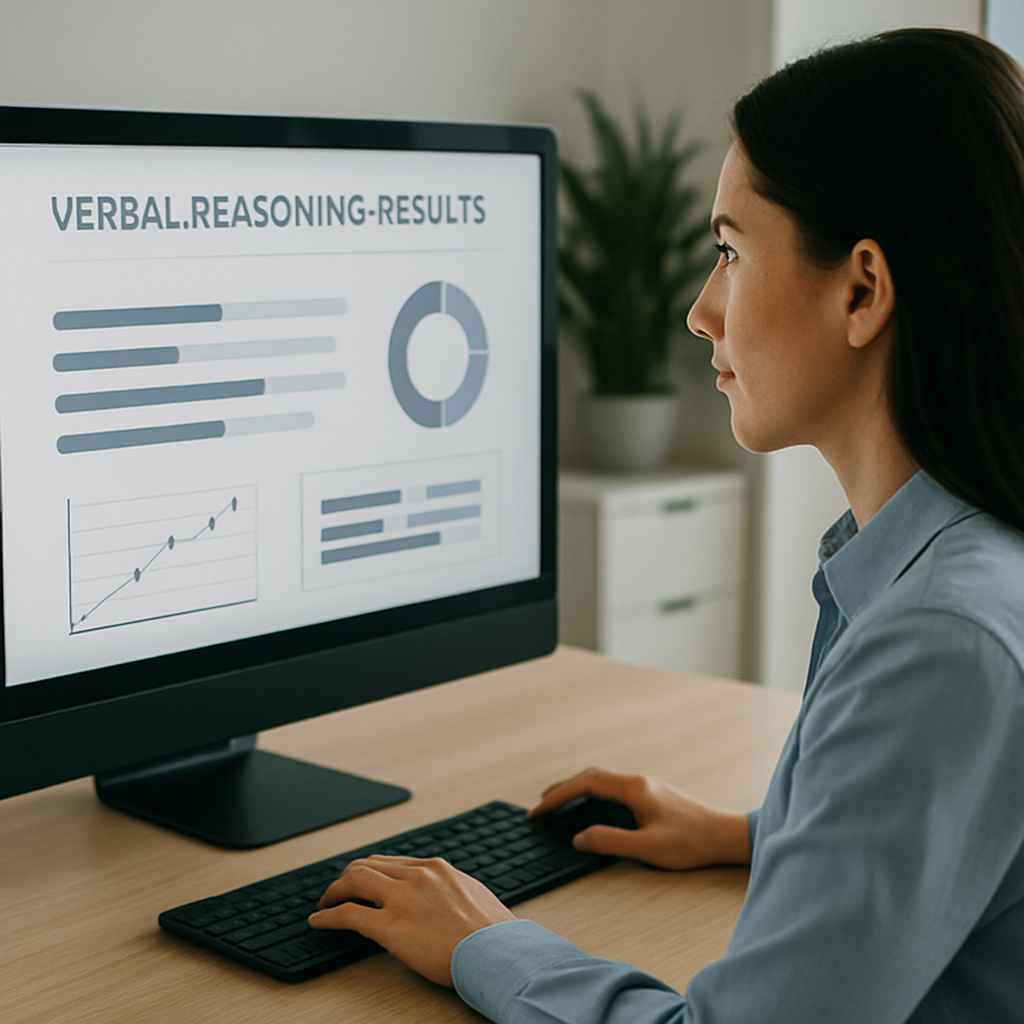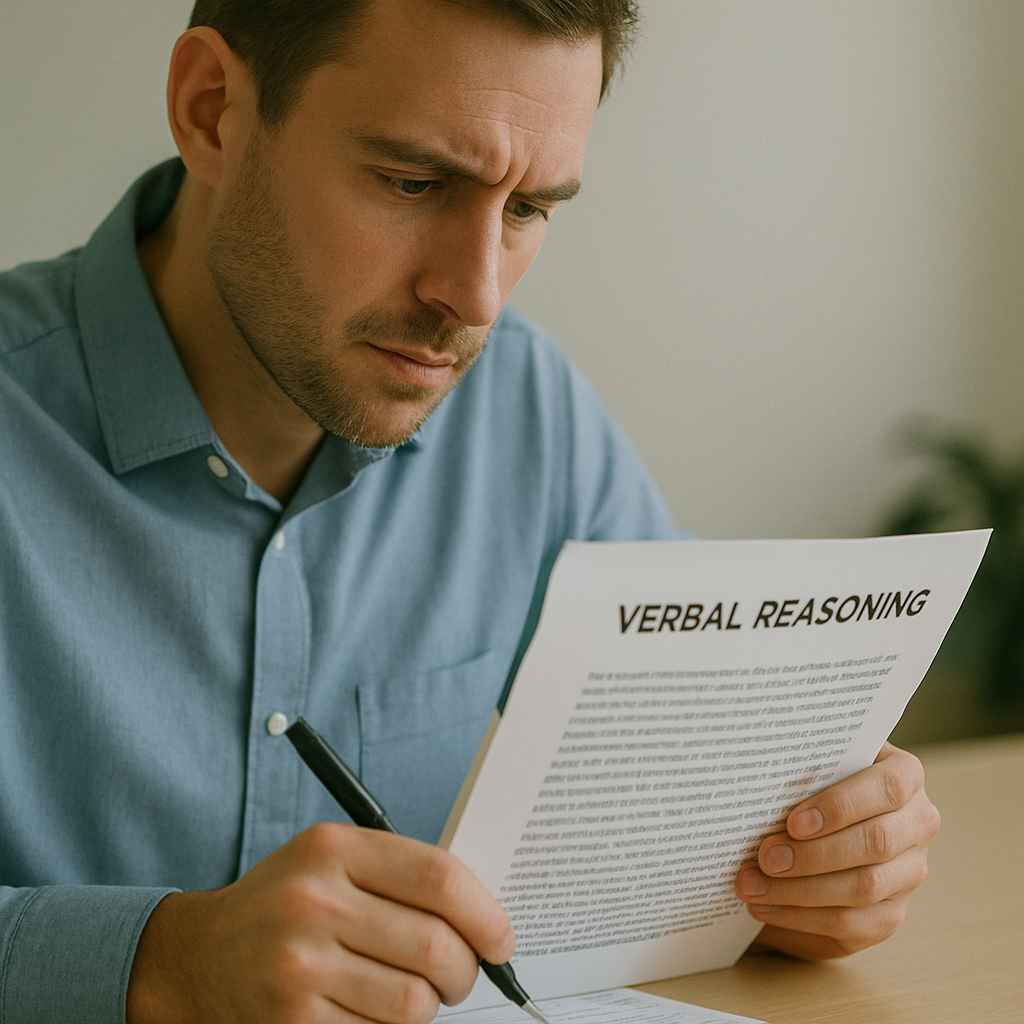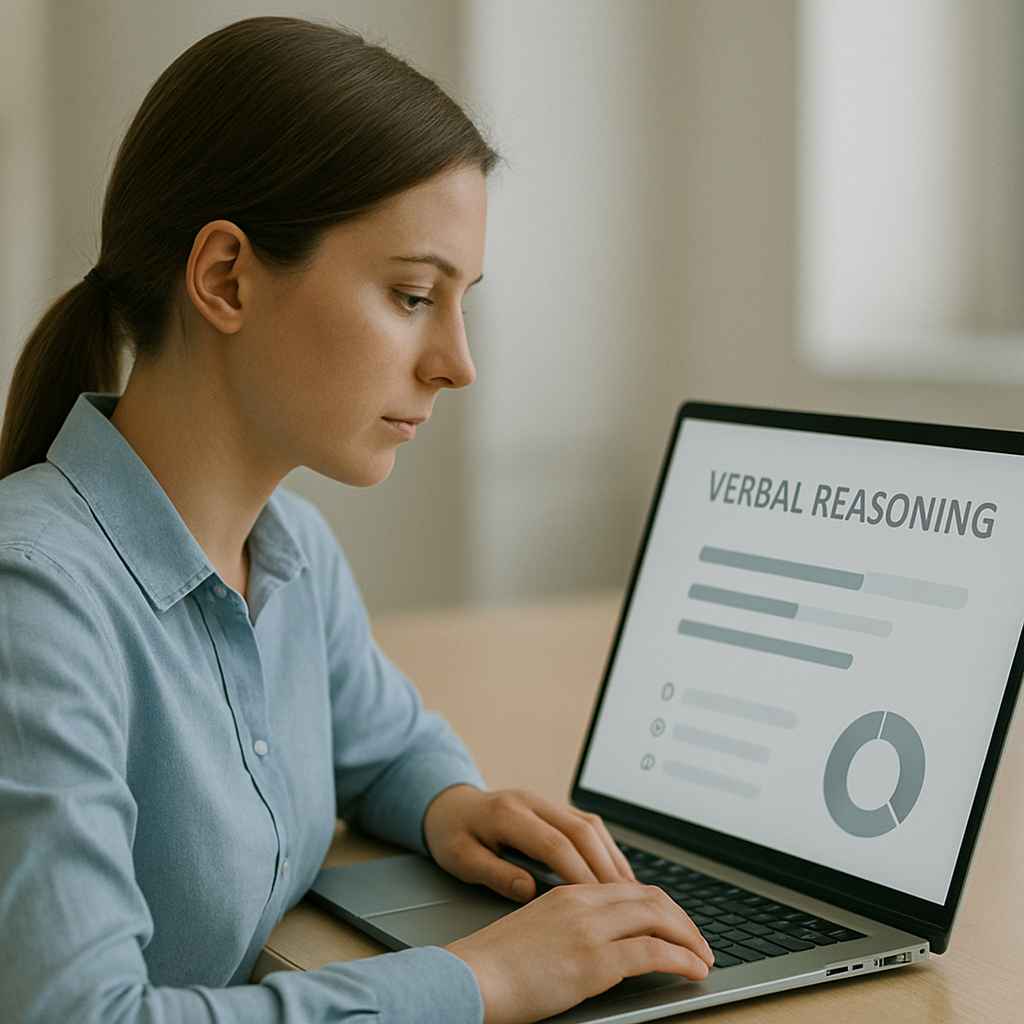Content
Hiring someone who sounds great in interviews but crumbles when they have to interpret instructions, write a report, or decode a client email? That’s where verbal reasoning tests come in.
These tests help you go beyond gut instinct and surface-level confidence to assess a candidate’s actual ability to understand, process, and communicate information clearly and logically.
In this guide, we’ll walk through real-world verbal reasoning test sample questions, how to interpret answers, and how to use these insights to make sharper hiring decisions.
What Is a Verbal Reasoning Test?
A verbal reasoning test assesses how well a person can read, comprehend, and make logical conclusions based on written information. In pre-employment screening, it’s often used to measure:
- Comprehension
- Critical thinking
- Inference-making
- Vocabulary and grammar usage
These aren’t just academic skills. They directly influence workplace communication, client handling, policy interpretation, and decision-making.
If you’re new to this test type, check out what a verbal reasoning assessment test is and why it matters in hiring for a foundational understanding.
Why Employers Use Verbal Reasoning Tests

Let’s be real: resumes don’t tell you how a person thinks. Interviews? Often just a polished performance. But structured assessments give you data.
Here’s what verbal reasoning tests offer:
| Benefit | How It Helps in Hiring |
| Removes guesswork | Objective measure of comprehension and logic |
| Ensures communication clarity | Predicts email, report, and policy understanding |
| Saves interview time | Filters out weak fits before the interview phase |
| Identifies leadership potential | Strong reasoning correlates with decision-making |
Types of Verbal Reasoning Test Questions

Let’s dive into the most common formats you’ll encounter—and why they matter.
1. True / False / Cannot Say (Inference)
Sample Question:
“All managers in the company must attend compliance training. Sarah is a manager.”
Can we conclude: Sarah must attend compliance training?
A) True B) False C) Cannot Say
Correct Answer: A) True
Why? It follows logically from the given statement.
2. Passage-Based Multiple Choice
Sample Question:
“The company’s growth in the second quarter exceeded expectations due to strong international sales and a weaker domestic currency, which boosted exports.”
What primarily contributed to growth?
A) Domestic sales
B) Strong global demand
C) International sales and currency effects
D) Local market expansion
Correct Answer: C
Tip for Employers: This question checks comprehension and the ability to identify key details under pressure.
3. Grammar and Sentence Structure
Sample Question:
Choose the sentence that’s grammatically correct:
A) He doesn’t agree with the policy changes.
B) He doesn’t agree with the policy changes.
C) He doesn’t agree with the policy changes.
D) He didn’t agree with the policy changes.
Correct Answer: C
Grammar-based questions help evaluate written communication clarity, essential for client-facing or documentation-heavy roles.
4. Synonyms and Vocabulary-in-Context
Sample Question:
Choose the closest synonym for “mitigate” in the context: “The company took steps to mitigate risk during the expansion.”
A) Eliminate
B) Increase
C) Reduce
D) Delay
Correct Answer: C
These questions help you understand how candidates interpret language nuances in business contexts.
If you’re looking for additional real-world samples, you can review these practice questions from ETS’s GRE Verbal section, which offer well-structured examples similar to those used in cognitive hiring assessments.
How to Interpret Scores (Without Overthinking)
Interpreting test results isn’t just about who got the most right. It’s about pattern recognition.
Here’s what to look for:
| Score Range | Interpretation |
| 85–100% | Exceptional reasoning; likely leadership potential |
| 70–84% | Strong performer; good fit for analytical roles |
| 50–69% | Average; may need further probing in interviews |
| Below 50% | Weak fit for roles requiring clear communication |
How to Use Verbal Reasoning Tests in Hiring

Here’s a simple flow to follow:
- Choose the right test
Go for validated tests like our Verbal Reasoning Assessment—short, targeted, and built for hiring. - Define the benchmark
Use job-level norms: entry-level vs. managerial vs. executive. - Pair with other cognitive tests
Combine with Matrix Reasoning, Numerical Reasoning, and Cognitive Ability for a full picture. For roles requiring sharper critical thinking and decision-making, consider including a logic test for employers to evaluate problem-solving and pattern recognition in real-world scenarios. You might also explore a dedicated problem-solving test for employers to assess how candidates approach challenges and make decisions under pressure. - Make data-informed hiring calls
Use results alongside interview scorecards and behavioral tests for a fair, well-rounded decision.
Related Cluster Topics to Explore
- Verbal and Non-Verbal Reasoning Tests: What Employers Need to Know
- Psychometric Verbal Reasoning Tests in Pre-Employment Screening
- Verbal Reasoning in Cognitive and IQ-Based Hiring Tests
- Best Verbal Reasoning Testing Tools for Hiring Teams
- Verbal and Logical Reasoning Tests: How They Work in Executive Hiring
- Sample Verbal Reasoning Test Examples for Employer Use
FAQ: Verbal Reasoning Test Questions for Employers
Q1: How long should a verbal reasoning test be?
A: Most are 10–20 minutes long, with 15–25 questions. Enough to evaluate logic under time pressure without exhausting the candidate.
Q2: Can these tests predict job performance?
A: Yes. Research shows strong correlation between verbal reasoning ability and success in roles requiring clear communication, reading comprehension, and written reporting.
Q3: Should I use the same test for every role?
A: Not quite. Adjust complexity and format based on the role’s level—entry-level admin vs. senior marketing manager, for instance.
Q4: Are verbal reasoning tests culturally biased?
A: Good ones aren’t. That’s why it’s crucial to use professionally developed and validated tests, not free templates from random sites.
Final Thoughts
If you’re still relying only on resumes and interview charm, you’re likely missing out on truly sharp candidates. Verbal reasoning tests cut through the noise and give you real insight into how candidates process information, communicate, and think under pressure.
When used with other cognitive ability tests, they help you build a hiring process that’s not only fair but incredibly effective.
Ready to see how this fits into your hiring flow?👉 Book a Free Demo Now – and let’s build a sharper, smarter team.
